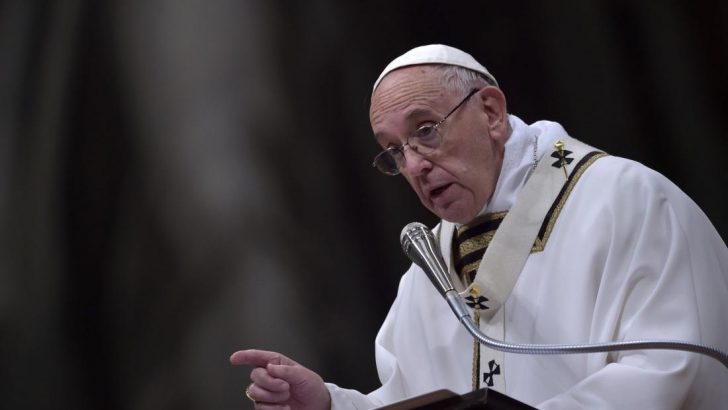Pope Francis has convened a special synod meeting of bishops for 2019 that will address issues facing the Church in what’s known as the Pan-Amazon region of South America. The meeting will look at Bolivia, Brazil, Colombia, Ecuador, French Guyana, Guyana, Peru, Venezuela and Surinam. Francis announced the move at the weekend and said the meeting would look “especially on indigenous people who are often forgotten”.
Synods addressing particular regional issues are not new. In fact, during the long pontificate of St John Paul II the Pontiff convened synods to look at the Church in every continent.
But, the particular dynamic of ecclesial life in that part of South America is causing some commentators to speculate as to whether or not the meeting might look at the issue of married priests – long seen by some as a way of addressing the high proportion of people in the region who are unable to have Sunday Mass due to the absence of a priest.
The reference to indigenous people – rightly or wrongly – is adding fuel to this since it is often people in remote Amazonian communities who are most cut-off and therefore cannot regularly avail of the sacraments.
Francis has touched on the issue of married priests on a number of occasions. In an interview earlier this year with German newspaper Die Zeit, the Pope was asked about the possibility of allowing married ‘viri probati’ – men of proven virtue – to become priests.
“We have to study whether ‘viri probati’ are a possibility. We then also need to determine which tasks they could take on, such as in remote communities, for example,” Pope Francis said.
But, while commentators often look at what Pope Francis says as innovative, expressing a willingness to study the question of allowing married men to become priests is hardly a ground-breaking response given that the topic was explored in two meetings of the Synod of Bishops and by both Benedict XVI and John Paul II.
Limited access
During the 2005 Synod of Bishops on the Eucharist, the possibility of ordaining men of proven virtue was raised as a way to provide priests for areas of the world where Catholics have very limited access to Mass and the sacraments.
“Some participants made reference to ‘viri probati’, but in the end the small discussion groups evaluated this hypothesis as a road not to follow,” a proposition from the synod said.
Eight years before he was elected Pope, then-Cardinal Joseph Ratzinger said that while married priests were not on the horizon in “the foreseeable future”, it was not an entirely closed subject.
In Salt of the Earth, an interview-book with Peter Seewald published in 1997, the future Pope said: “One ought not to declare that any custom of the Church’s life, no matter how deeply-anchored and well-founded, is wholly absolute. To be sure, the Church will have to ask herself the question again and again; she has now done so in two synods.”
The question of mandatory celibacy for most priests in the Latin rite of the Catholic Church has been debated heavily in recent years, with some people seeing it as a way to encourage more men to enter the priesthood since they would be able to serve without giving up marriage and the possibility of having a family.
In the book On Heaven and Earth, originally published in Spanish in 2010, the then-Cardinal Jorge Mario Bergoglio, acknowledged that while he is in favour of maintaining celibacy in the priesthood, it “is a matter of discipline, not of faith”.
John Paul II had said the same. During an audience in 1993, he said that while celibacy “does not belong to the essence of priesthood”, Jesus himself proposed it as an ideal.
Similarly, then-Cardinal Ratzinger said the celibacy requirement “is not dogma” but rather a “form of life” that involves the priests’ faith and not his dominion over his own nature.
“I think that what provokes people today against celibacy is that they see how many priests really aren’t inwardly in agreement with it and either live it hypocritically, badly, not at all, or only live it in a tortured way,” he said.
Pope Francis’ openness to considering an expanded possibility for married priests is not revolutionary, but is a continuation of a conversation that has gone on for decades and is likely to continue for some time.


 Michael Kelly
Michael Kelly